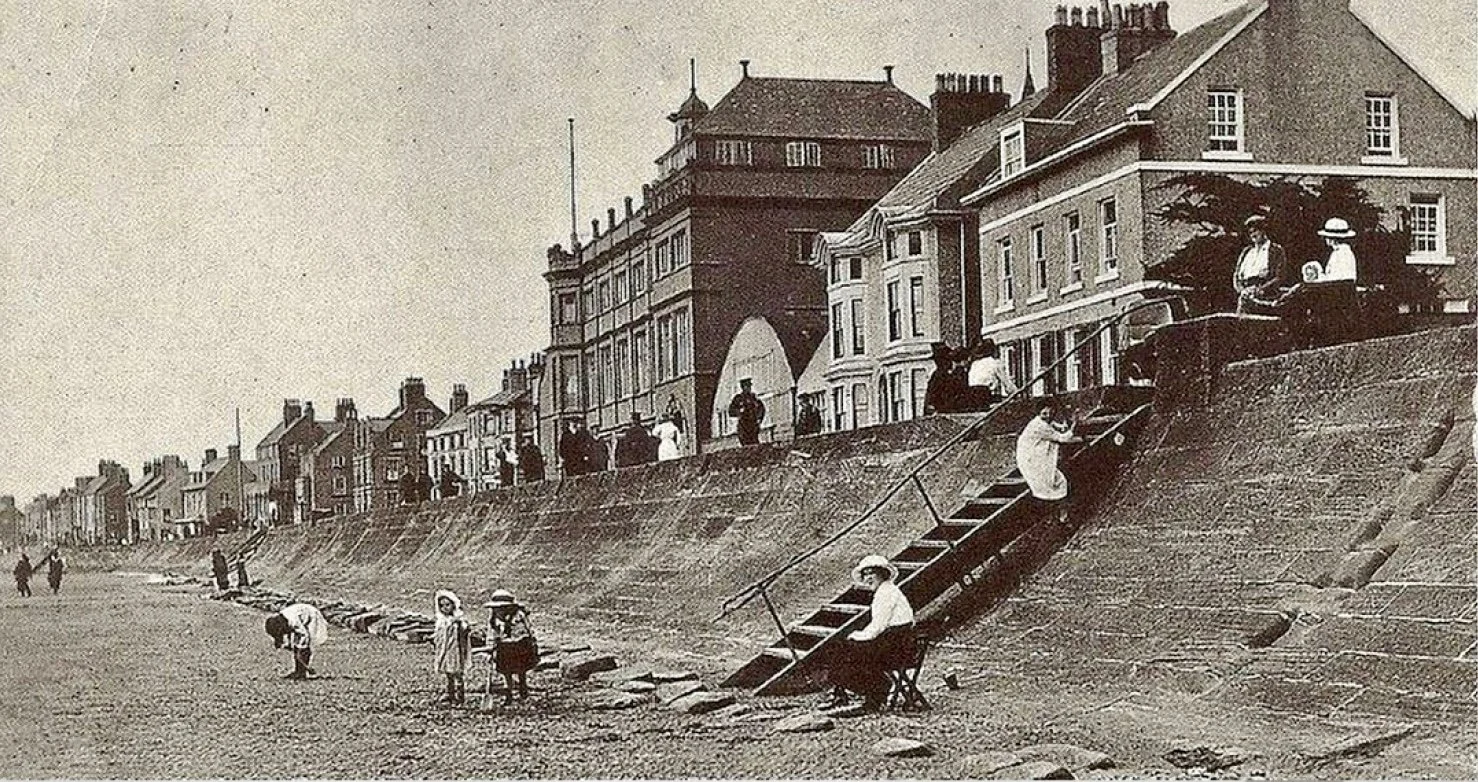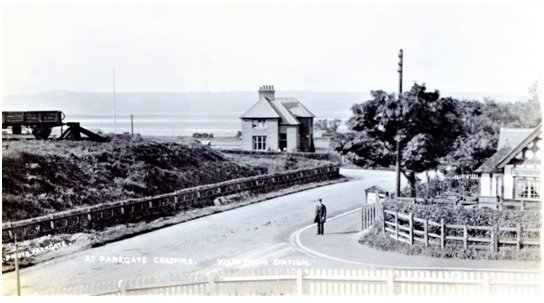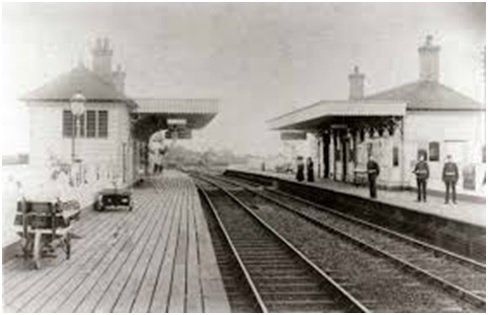the railway
The railway first came to Parkgate in 1866, when a branch of the Birkenhead Railway (Chester to Birkenhead) was opened from Hooton to a terminus situated on the south side of Station Road (where the Ropewalk car park now is). This line provided passenger connections to Liverpool and Chester. It was also used as an outlet for local products, particularly the coal mined at Neston colliery, which opened soon afterwards and was served by a local branch from the Parkgate end. Twenty years later, in 1886, the line was extended along the coast to West Kirby, and a new through-station was built at Parkgate on the new alignment on the north side of Station Road.
Plan of about 1910 showing the Parkgate station of 1886 to the north of Station Road and the site of the original station to the south, now a goods yard with cattle or coal dock and sidings. The stationmaster’s house occupies plot no. 320.
A pre-1914 photo by Arthur Maycock of Station Road, showing centre the station master’s house and left a wagon in the siding, where the original station stood. To the right is the photographer’s house Summerfield, outside which his friend poses for the camera.
Parkgate station about 1910, looking towards Neston. The presence of uniformed soldiers suggests this photo was taken at the time of the RGA’s summer camp on nearby Parks Field.
In the years before the Great War, Parkgate was host to various regiments of territorial soldiers who visited each year for their annual summer camp. To the right we see a crowd of local folk who have turned out to watch the arrival of these part-time volunteers as they march from the station to set up their camp in Parks Field.
The former steel girder bridge across Station Road, Parkgate, built for the 1886 extension; the Girls Guildry procession was held as part of the local celebrations for the coronation of George V in 1911; the station entrance is to the right.
A short train for West Kirby makes its way down the grade from Neston towards Parkgate,
bunker first. The location is Moorside Lane bridge, where the freight line from Neston
Colliery (right-hand track) joins the line from Hooton. The loco is one of Birkenhead’s ex-
GWR 4575 class small prairie (2-6-2) tank engines.
This railway line was an early casualty of post-war road competition and closed to passenger traffic in 1956. Following demolition of the railway structures from 1962, after the cessation of freight services, the track-bed was transformed by Cheshire County Council into Britain’s first country park, opened in 1973. As the Wirral Way, it today provides a recreational route for walkers, cyclists and horse riders for the 12 miles between Hooton and West Kirby.
An ex-LMS Stanier-designed 8F 2-8-0 loco is in charge of one of the demolition trains on the stretch of line between Station Road and Moorside Lane. The houses to the right are in Parkgate Road. The track in the foreground is the former branch line to Neston Colliery, which is being lifted first. The loco is one of a large class that latterly were the mainstay of London Midland freight work, surviving until the end of British Railways steam haulage in 1968; about a dozen of these locos were based at Birkenhead.
For more details of the history of the railway at Parkgate see Alan Passmore’s article on the Neston Past website: www.nestonpast.com
Last Updated May 2022







